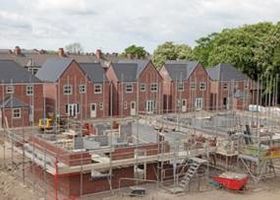
While the jobless figure rose, the rate of increase appears to be slowing, but youth unemployment brought further bad news for Government as it hit a record high.
The latest disappointing figures will raise pressure on Chancellor George Osborne to boost growth and jobs in his Budget next week, at a time when the economy is struggling to show sustainable recovery.
UK unemployment rose by 28,000 to 2.67 million during the three months to January, according to the Office for National Statistics.
Youth unemployment, among 16-24 year olds, rose by 16,000 to 1.042 million, a rate of 22.5%.
Employment Minister Chris Grayling said: "This is a more encouraging set of figures, with signs that the labour market is stabilising, but there is clearly still a big challenge ahead to bring down unemployment and get people back to work.”
Mike Leonard, Director of the MMA said, "Mr Grayling may feel that unemployment is stabilising but there is no evidence to support this.
“The numbers fail to tell the full story as they do not take account of those who have given up looking for work, the under employed and those who are forced to take work that does not make full use of their skill sets.
“Without Government intervention unemployment will continue to grow with very serious social and economic consequences.
“Let's hope Mr Obama is showing Mr Cameron at this very moment that investing in new homes and infrastructure with materials produced within country is the route to economic recovery and job creation.
“So come on Prime Minster let's Get Britain Building now and start our recovery before we lose skills, capacity and a whole generation of young people.
Unemployment in the regions
North East 138,000 down 11,000 - 10.8%
North West 317,000 up 16,000 - 9.3%
Yorkshire/Humber 261,000 up 9,000 - 9.8%
East Midlands 187,000 up 5,000 - 8.2%
West Midlands 241,000 down 1,000 - 9.1%
East 208,000 down 10,000 - 6.8%
London 433,000 up 11,000 - 10.2%
South East 287,000 up 14,000 - 6.5%
South West 169,000 down 8,000 - 6.3%
Wales 134,000 plus 1,000 - 9.1%
Scotland 234,000 plus 6,000 - 8.7%
Northern Ireland 56,000 minus 4,000 - 6.5%




















































